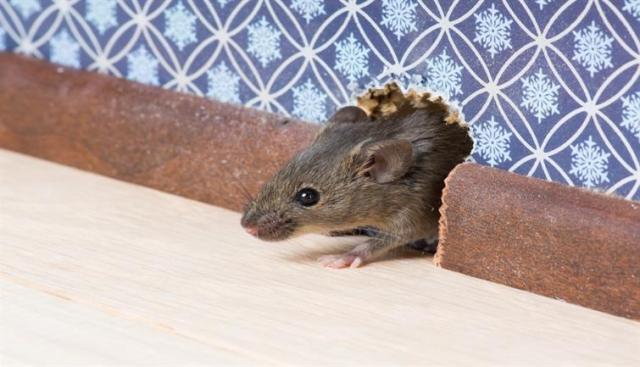Cozy, comfortable, and full of food: the reasons you love your home are the same reasons mice (and rats) do too. Apartment living is full of rewarding experiences and elements, but pests are not one of them. If you wake up in the middle of the night — or can’t fall asleep to begin with — to a scratch or a scuttle from within your walls, you could have a serious problem on your hands. Don’t fret, a mouse or rat infestation is relatively simple to handle, but first you have to be sure that you’re dealing with mice in your walls.
Check Your Lease
Before you do anything, check the specifics of your lease to see who’s responsible for taking care of mice and/or rats. Nine times out of ten, it’s up to your landlord to cover the cost of extermination, but you’ll want to be sure. For apartment renters in big cities, it’s critical that you have a clause in your lease that delegates pest extermination and its associated costs to the landlord. After all, it’s in your and your landlord’s best interest to avoid the damage that mice can cause.
Look for Evidence
The first step to solving a rodent problem is to be sure you have one. Mice leave behind plenty of evidence once they’re in your home, so once you know what to look for it should be easy to take care of the problem.
Droppings:
Although gross, mouse droppings are easy to spot. They look like small, black or dark brown pellets. Look for them in drawers or cabinets, or near possible entry points.
Runs:
Runs are the oily smear marks where mice run along walls or other paths. They may be extremely light in color and just appear wet. They’ll be darker in color if you’re dealing with a large infestation.
Nests:
Mice can make a nest from almost anything: clothes, paper, cardboard, etc. If you suspect a large infestation, look for nests in the less-frequented parts of your home like cabinets, under furniture, in your crawl space, and behind appliances.
Identify Entry Points
Mice, rats, and other pests are extremely talented when it comes to getting where they shouldn’t. A hole as small as a dime can be all a mouse needs to enter your apartment, so be sure to check the exterior of your unit, especially if you live on the ground floor. Common entry points for rodents can be found where utilities enter your apartment, crawl space vents if your complex has one, and builders gaps under the eaves of your roof (if your apartments has one).
Take Preventative Measures
Just like roaches, rodents come into apartments and other dwellings looking for food and water for the most part. So do whatever you can to make sure they don’t come into yours. Take bags of trash out immediately and always wash your dishes, never leaving them on the counter or in the sink for extended periods of time. If you’ve identified any entry points that give you cause for concern, tell your landlord or management company and schedule a maintenance visit to have them filled. Try not to leave your doors or windows open for a long period of time. It may seem inconsequential, but mice can do a lot with the smallest window of opportunity.
Electronic repellants are a great first step to avoiding rodent visitors of any kind. They work by emitting a high-frequency sound that only specific pests can hear. With any luck, you’ll keep the intruders at bay (or drive any pre-existing ones away) without getting your hands dirty.
Pets are also a great way to keep mice at bay. Cats and dogs are well-suited to detecting rats or mice in places you couldn’t, so if your apartment allows it, it might be wise to look at adopting a furry friend.
Use Traps Strategically
In the event that you do end up taking care of your rodent problem on your own, it’s best to know how to take care of it properly.
If you elect to use traps, there are two routes you can take: humane traps that will allow you to relocate the mouse, and, well, the kind that don’t. With no-kill traps you do run the risk of mice returning if you don’t move them far enough, and traditional traps can sometimes involve unwanted clean up. Regardless of the trap you use, put emphasis on placement. Place your trap of choice near a suspected entry point, preferably with some sort of sweet food for bait (peanut butter works particularly well). If you do catch a critter, wear gloves when retrieving the trap. If you’ve used a traditional trap, place it and the mouse in a plastic bag before disposing of it.
Pests can be an unfortunate part of apartment living, especially if those pests are rodents who have made a home in your walls. Mice need very little to gain access to your apartment, but as easily as they might come in, you can evict them just as easily. Hopefully the steps above have helped you identify that mysterious sound coming from behind your drywall, and how to do deal with the offenders. We all know mice or rats won’t be paying rent anytime soon, so it’s best to get them out while you can.




